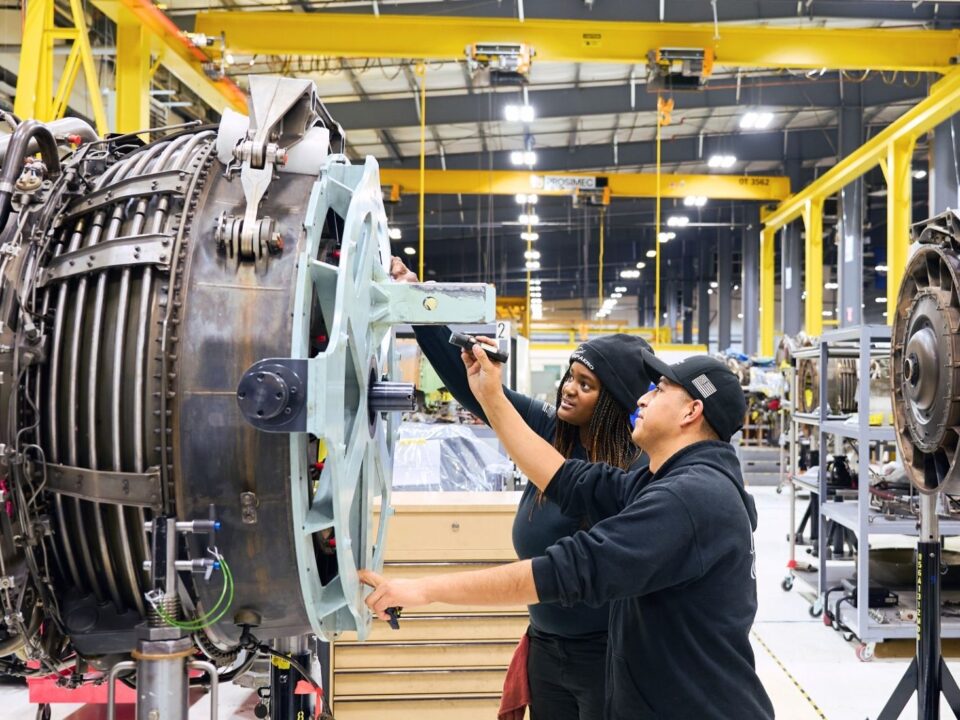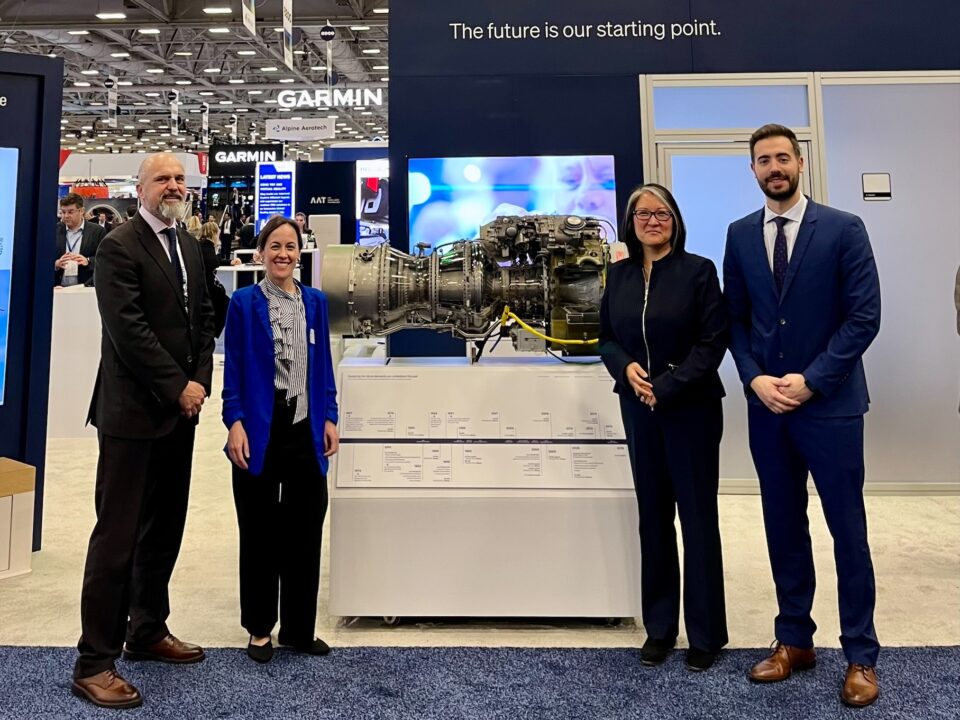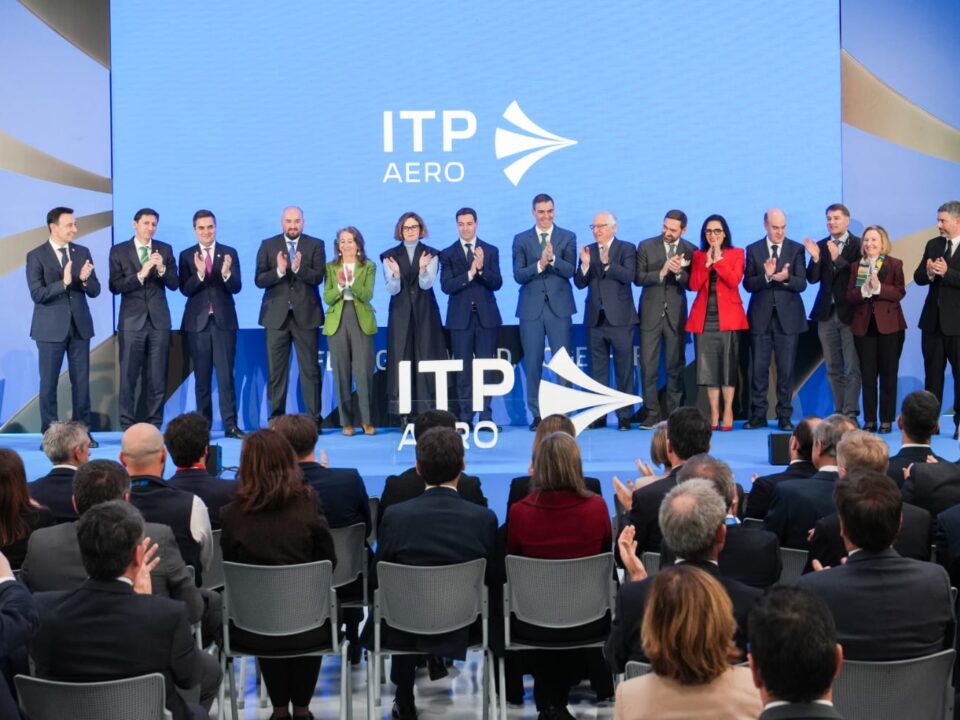ITP turnover up 9.9%, reaching 780 million euros in 2016
April 4, 2017CEB reinforces partnership with ITP
November 23, 2017The exhibition “From Elizalde to ITP” retraces the history of the design and manufacture of aircraft engines in Spain. It can be visited from 6 November to 15 December at the Higher Technical School of Aeronautical and Space Engineering of the UPM (Polytechnic University of Madrid), as part of the activities of the Madrid Science Week.
2017 is the centenary year of the first aircraft engine manufactured by the company Elizalde in Spain at the request of the government in office at the time (1917). ITP is the heir of that company, which has had different owners, being firstly acquired by the government under the name ENMASA and subsequently absorbed by CASA. CASA’s engine plant in Ajalvir (Madrid) was finally acquired by ITP in 1990, eventually becoming the company it is today, leader of that aeronautics market segment, with more than 3,500 employees, presence in six countries and three business areas: civil, defence and in service support.
“From Elizalde to ITP: 100 years of aviation engines in Spain” is the name chosen for the exhibition to commemorate its history and highlight the evolution of the company that pioneered and grew on a par with the technology used in those engines. It can be visited at the Higher Technical School of Aeronautical and Space Engineering (ETSIAE) of the Polytechnic University of Madrid (UPM), both in its interior and exterior, in a marquee specially installed to house the collection.
This review of the history of aviation engines consists of 18 engines and modules, starting with the Elizalde Lorraine 12W engine manufactured in 1926 for CASA-Breguet XIX aircraft and concluding with the TP400 engine of the Airbus A400M military transport aircraft manufactured in 2009, which is the most powerful turboprop developed to date in the Western world. The collection also features another 16 engines including, namely, the Tiger engine or EJ-200 (Eurofighter engine), Flecha, Maboré, INI11, the turbine of the Rolls-Royce Trent 500 engine and the Rolls-Royce M250 turboshaft, ceded not only by the ETSIAE and ITP, but also by the Airforce Museum, the Fundación Infante Orleans and the Museum of Science and Technology of Catalonia.
Alfredo López, Director of Advanced Engineering of ITP, and associate professor of the UPM and Álvaro González, aeronautics historian, are the commissioners of the exhibition. “Visitors will gain insight into the technological evolution in the field of propulsion. Advances in engine technology enabled the flight of devices heavier than air at the beginning of the last century, while the development of the alternative engine enabled the first aircraft to have a sufficiently light powertrain capable of supplying power to the propellers. The next step was jet stream, with gas turbines, which led to supersonic aircraft. However, the greatest milestone was the turbofan, which reduced noise and consumed less fuel, due to which it is currently the most widely used in commercial transport aircraft. “Ongoing initiatives are under way to improve engines in terms of efficiency and environmental impact,” explains Alfredo López.
Álvaro González highlights “the continuity in the design, project, manufacture and maintenance of the Spanish aeronautical industry over 100 years beyond the ownership of the capital -private and public but fully Spanish and, subsequently, with participation of foreign capital-, adapted to the needs and evolution of the current economy. Although not visible at the exhibition, the driving force is human capital: highly specialised workers and technicians of all levels, who were essential to transitioning from an agricultural economy in 1917 to the current industrialised and post-industrial economy.”
The exhibition, organised by the ETSIAE and ITP, forms part of the activities of the 2017 Madrid Science Week and reflects the collaboration between the two entities, materialised in the ITP Chair of Turbomachinery Studies. “Most aeronautical engineers in Spain study at the ETSIAE and many of them end up working at ITP; furthermore, at ITP we are committed to training and recruiting young engineers in the job market,” he explains. Likewise, “Elizalde’s centenary commemoration is aimed at driving the aeronautics industry in the Community of Madrid, sharing the technological advances in the industry and attracting new generations to this sector,” he concludes.
The entrance to the exhibition will be free of charge from 6 to 17 November. After that date, visits must be scheduled by writing to confirmacion.eu.aeroespacial@upm.es. During the first period, guided visits can be made on Tuesday, 7 and 14 November from 11 a.m. to 12 p.m. and Thursday, 16 November from 6 to 7 p.m.
Complementary activities
In addition to the collection of historical engines, other activities have been organised in relation to this theme that must be booked in advance. Two conferences: “A look back at the aviation engine industry in Spain” (13 November at 7 p.m.) and “Future and emerging technologies in aeronautical propulsion” (16 November at 7 p.m.); two practical workshops: “Aircraft testing” (7 November, from 12 to 1 p.m.) and “Aeronautical Materials” (13, 14 and 15 November, from 12 to 2 p.m.) and a guided visit of the ITP plant in Ajalvir.
Inauguration of the exhibition
The exhibition “From Elizalde to ITP: 100 years of aviation engines in Spain,” opens on 6 November at 11 a.m. It will feature the presence of Guillermo Cisneros, Dean of the UPM; Javier Crespo, Director of the ETSIAE; and Iñaki Ulizar, Chief Technology Officer of ITP.
Notes to the editor
ITP Aero is currently the ninth largest aircraft engine and components company in the world by revenue. Ranking among the top one hundred companies in the aerospace industry (Top 100 Aerospace Companies, PwC and Flight International). The company employs over 3,800 people at its production centres in Spain, United Kingdom, Mexico, the United States, Malta and India.
Among its activities, ITP Aero includes the design, research and development, manufacturing and casting, assembly and testing of aeronautical modules and engines. It also provides MRO services for a wide range of engines for regional airlines, business aviation, helicopters, industrial and defense applications. ITP Aero operates as a corporate entity within the Rolls-Royce group.
Louis Trollope
Communication Specialist
M: (+34) 610 267 334
louisjon.trollope@itpaero.com
www.itpaero.com





